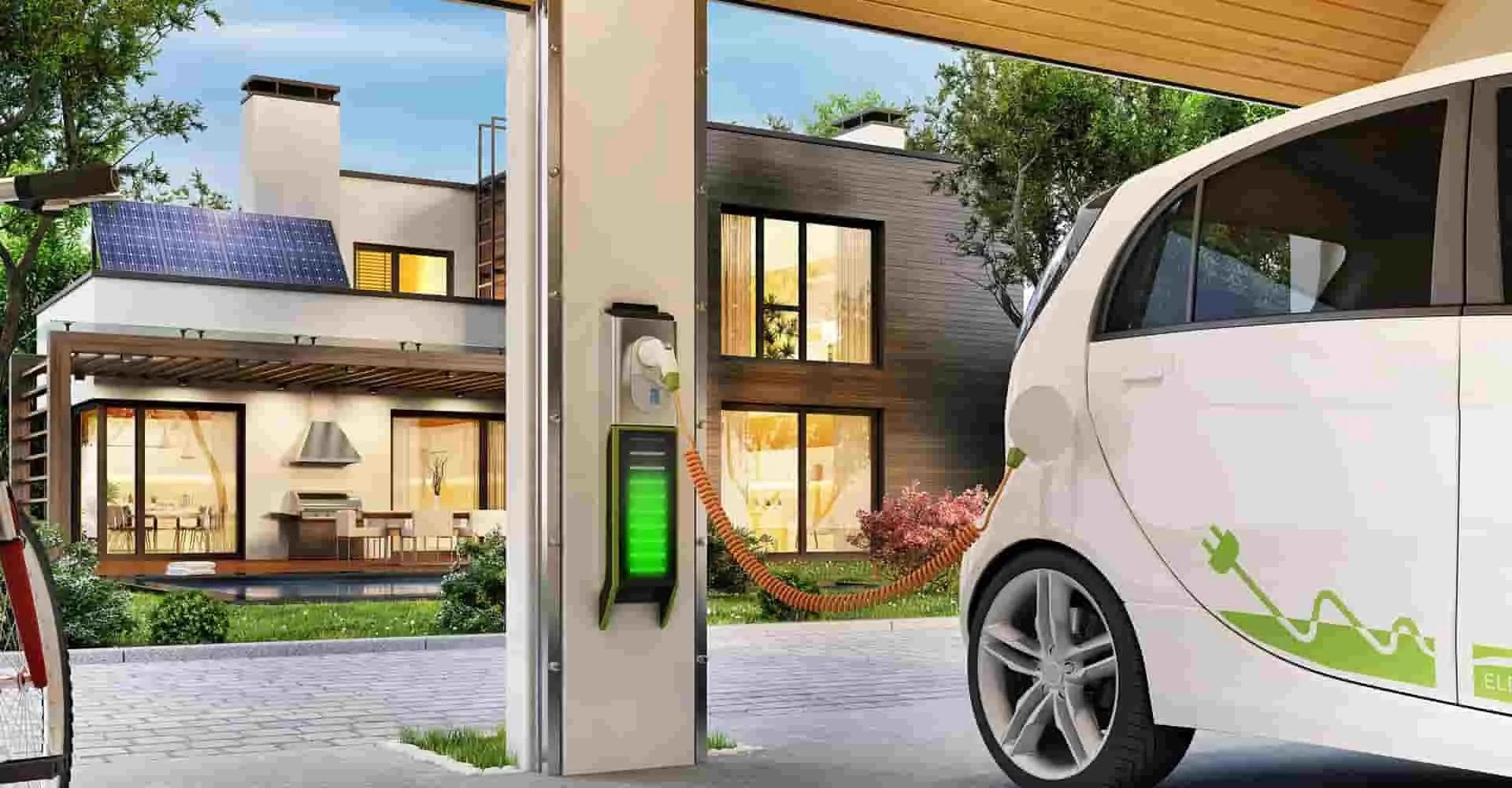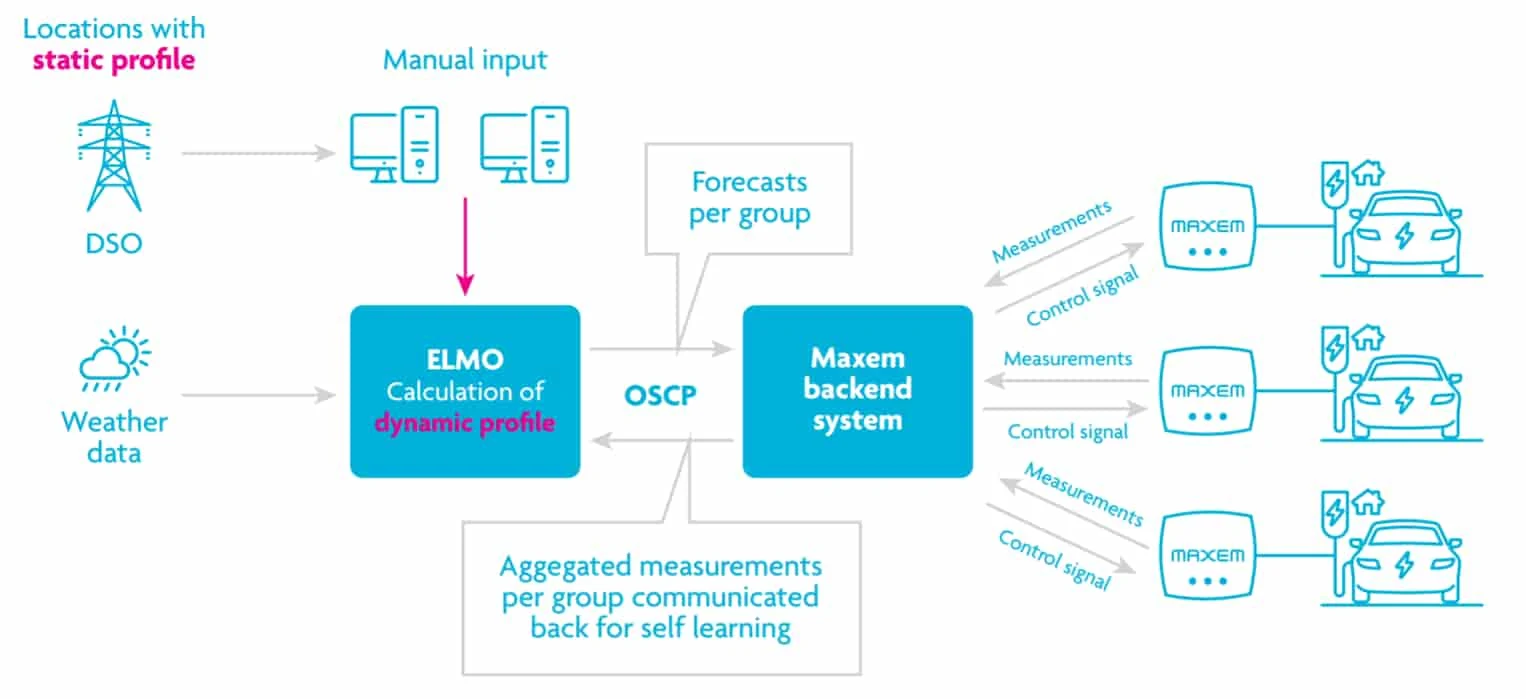SMART CHARGING 103: Smart Energy Management with Electric Vehicles at Home

Household energy consumption is on the rise with the advent of large energy-consuming appliances, such as electric vehicles (EVs) and heat pumps. This increases the demand for energy and (peak) capacity demand.
Managing these appliances can eliminate the need for major investments in grid reinforcement. Such capacity management is a prerequisite for an affordable energy transition. One possible solution is to introduce charge management for electric vehicles at households using a home energy management system (HEMS).
This pilot study conducted by Enexis Netbeheer, Enpuls, ElaadNL and Maxem examines the role of a HEMS in communicating a capacity profile from a grid operator to households.
Research Objective:
The main research question is: To what extent can grid operators lower the peak load of the low-voltage electricity grid by controlling the charging of electric vehicles at households, and how do consumers experience this? This pilot is designed to provide insight into the required technology, as well as the impact and acceptance among households.The goal is to identify a scalable solution that provides flexibility to grid operators and avoids grid congestion. The pilot is an initiative of Enexis Netbeheer, Enpuls, ElaadNL and Maxem. It was initiated in September 2017, with a lead time of two years, consisting of one year of preparation and one year of charge management.
Research method:
To answer the research question, the researchers set up a pilot study. The participants in the study were 138 Dutch households with a battery electric vehicle (BEV), a home charge point and a HEMS.Charge management was operationalized by sending maximum capacity limits from the distribution system operator (DSO) Enexis to the aggregator Maxem, managing the charging sessions of the EVs via the HEMS. Both dynamic and static charge profiles were applied and studied. The degree of constraint of the charge points was changed regularly to determine the impact of charge management.
Via a mobile application, participants had the possibility of manually overriding the control signal. Half of the participants were given a financial incentive to provide flexibility to the DSO, which depended on their use of the override function. To gain deeper insight into the attitude and experience of end users towards charge management, the data research was accompanied by behavioral research.

Results and conclusions:
Applying charge management via a HEMS at households can significantly reduce the grid impact of charging EVs. The pilot found that dynamic charge management resulted in a 40% reduction in peak load on the low-voltage grid. A concept with static charge management proved not to be useful: it shifted the peak load to a later point in time without reducing its magnitude.Charge management was successfully operationalized using the Open Smart Charging Protocol (OSCP). Some practical obstacles occurred, such as calculating the impact of charge management. Furthermore, currently none of the available protocols both fully matches the exact use case of this pilot and is widely accepted or used by a large part of the industry.
We conclude that charge management via a HEMS has a minimal effect on the attitude and experience of participants. The behavioral research shows that participants generally have a positive attitude towards charge management. A large majority of the participants are willing to continue using charge management. There was no observable difference in attitude towards charge management between the start and end of the pilot.
Although data shows that participants did not use the override function frequently, most participants indicated that having the function is important. Some even described it as “essential.” The existence of a financial incentive for the participant had no impact on the attitude and experience towards charge management. Data shows that participants who were given a financial incentive did not exhibit deviant charging behavior. Despite this finding, participants indicate they find financial incentives attractive and hold a positive attitude towards them.
Recommendations
Based on the results and conclusions, the researchers recommend the following areas for further research:1. Trying different communication protocols and examining the communication and data exchange between parties.
2. More focus should be placed on creating a standardized protocol that can communicate with both EVs and heat pumps. Researchers should also explore how to harmonize and standardize a possible solution that is not dependent on a specific DSO or aggregator.
3. The method for calculating the impact of charge management needs to be studied in greater detail to provide a more accurate calculation of grid impact.
4. The reasons why people value the override function should be studied in greater depth. Instead of measuring afterwards, direct user-interaction can provide more insight into why people use the override function.
5. Some participants indicated they would have appreciated more information. Therefore, more research should be conducted on how to provide such information.
6. Different customer propositions should be studied to investigate whether people are willing to provide more flexibility in return for an (extra) financial benefit.
7. Consider a larger pilot group and, if possible, a more diverse group and different household compositions.
8. Map and monitor where home energy management systems will arise and within what timespan. Follow this up by considering the development of such devices, along with the quantities and locations in which they are expected to be adopted.
You may download full summary of the pilot study from here (Elaad website).








Post a Comment